Adding Products
This is a general overview and outline for adding new products, for detailed information about specific product types please see the "Types of Products" section located here.
Further information about each product form field can be found here.
- To add a new Product, select "New Product" from the " Newentry area as shown below.
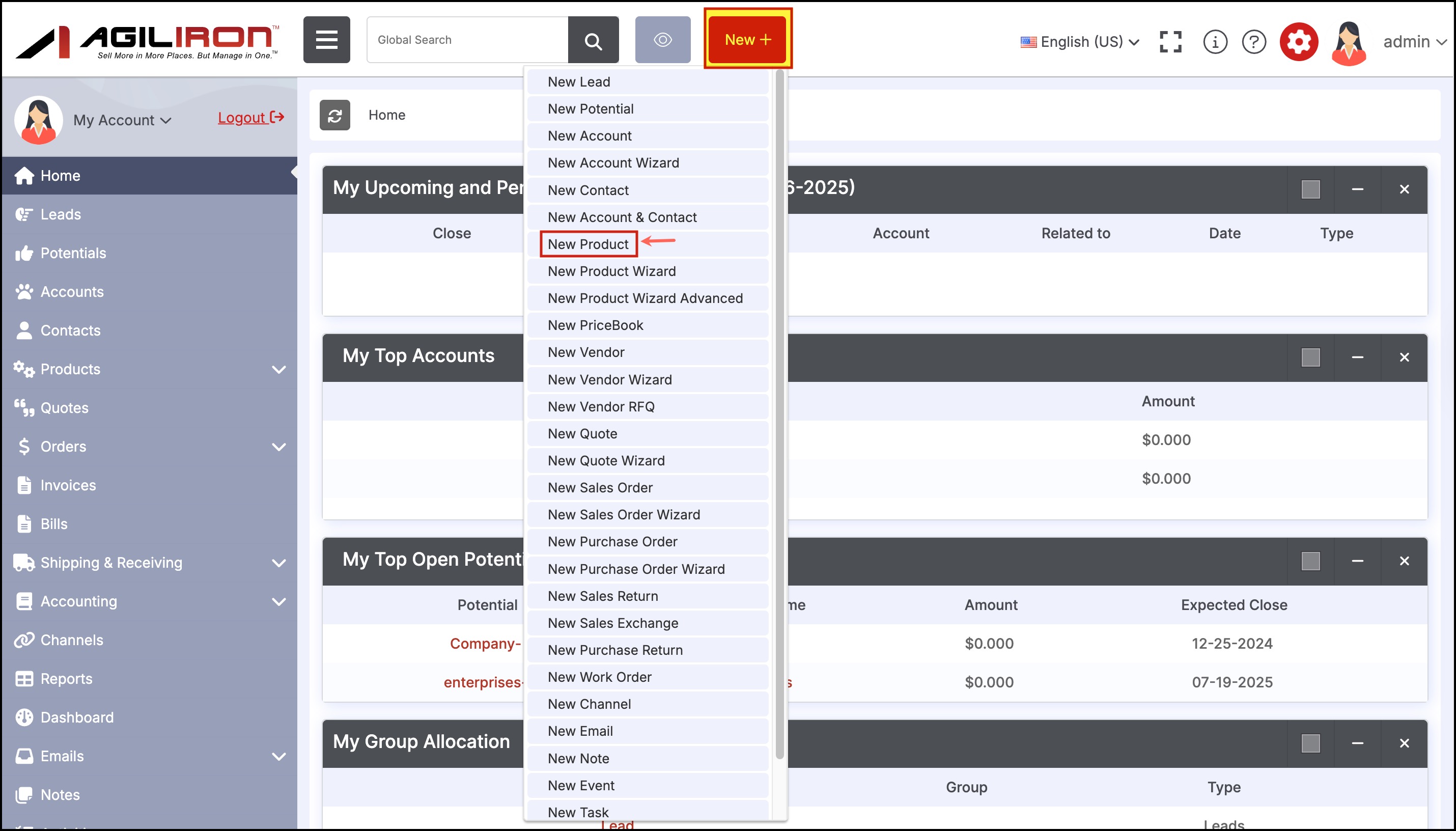
This will bring up the product data definition form as shown below. The attributes marked with a * are mandatory, and the rest of the fields are optional.
-
Product Name - the product name will display in the products module and also as the Short Description on most web channels. This data you enter here will be reflected in the product name on sales orders, purchase orders, etc. The character limit for product names is 75.
-
Product Code - the product code is the unique identifier for the product. This can be the same code as the UPC/SKU/Bar Code, or it can be something unique to your business. The character limit for product codes is 50. Note that product codes must be unique to each item and duplicates are not allowed.
-
The exception to this rule is for Matrix Type Products. For Matrix Product Codes, the parent code must be the same for the entire Matrix Group, and each Matrix Child SKU code must be unique.
-
The system can also automatically generate sequential numbers for Product Codes, Barcodes and Matrix Sku Codes (for Matrix Item products). This feature is not turned on by default, please email [email protected] to have it turned "on".
-
Product codes can contain characters such as:
-
a to z
-
A to Z
-
0 to 9
-
. (dot)
-
_ (underscore)
-
(
-
)
-
_ (dash)
-
Space
-
From the list of "Product Categories", you can select one or more categories to associate with the Product. If more than one category is selected, the product will be listed under all the selected categories when displayed in the stores.
-
To select multiple categories, use Shift + Right Mouse Click.
-
Preferred Vendor, while not marked as mandatory, is a field we recommend selecting so that Purchase Orders can be created for the products later.
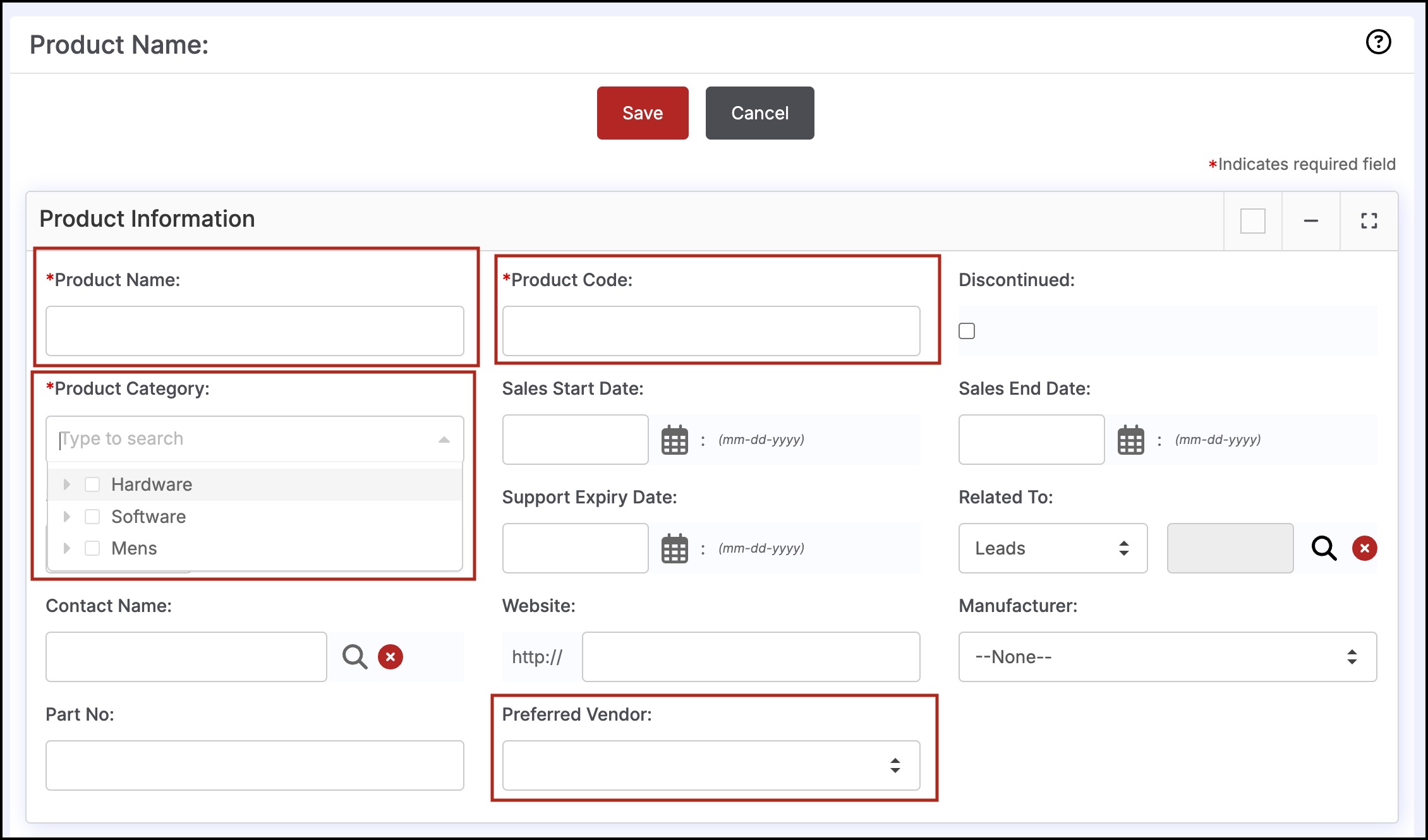
Product Type Information
The Product type determines how the product will function in the system and across sales channels. Once a product type is selected and the product is saved, the type cannot be changed (the user can however delete the item and re-create it, assuming the product hasn't been assigned to any sales/purchase orders).
- Each new product created can be designated as "Serialized" or not by selecting the "Serialized" product type checkbox highlighted above. Checking this option allows the individual stock items of a product to be tracked by unique serial numbers. Some businesses need the ability to check the inventory by serial number of each inventory item for larger or high-value items (e.g. jewelry, electronics), and other businesses may just want to track their inventory by the number of items of each model number (or product code) on hand. The AGILIRON system is capable of handling either approach. If you choose to track items by serial number, check the "Serialized" checkbox; if you choose to track total inventory by product code, leave the "Serialized" box unchecked.
- Each new product created can also be designated as "Matrix Item" or not by selecting the "Matrix Item" product type checkbox highlighted above. See Managing Matrix Item Products section for details on setting up the Matrix Item attributes before creating products with matrix items. This capability enables businesses (e.g. apparel) that need to stock and sell products in various colors, sizes, and style combinations to manage that effectively.
- In addition, if the product is a non-inventory product like a service (e.g. gift wrapping, refurbishing of a product) then select the "Service" product type checkbox. Inventory tracking will be turned off for this type of product. When you select this checkbox many fields in the product form will be turned off (e.g. "Stock Information" ) because they are not relevant to this category of products.
- For products that are manufactured in groups and need to be tracked by the manufacturing lot that they belong to, the "Enable Lot Tracking"product type checkbox should be selected. This allows information about the lot (inventory quantity, creation and expiration times, lot number, manufacturing operator and any additional information related to the lot) to be captured as you add inventory for this product into the system.
- For finished goods products that are a built from other products (raw materials/components) in the system, the "Assembly" product type can be used to build them and be assigned a selling price. The Unit Cost of the Assembly product is automatically calculated based on the unit cost of the components that define the Assembly. Inventory must be "pre-built" for sale, meaning the product inventory quantity for sale increases with each build initiated and the component inventory depleted as a result.
- To combine products into a new bundle or "Kit" for resale, select the "Kit" product type checkbox. This capability enables the sale of products for marketing promotions (such as buy-one-get-one-free twin packs, bundles of combination products etc.). When the Kit product is sold, inventory from each component within the kit is reduced. Inventory does not need to be "pre-built" as with the Assembly products, and Kits do not house their own inventory quantities.
- For businesses that have related products that are identified by differing product codes, the "Proxy" feature can be used to associate many "child" products to one "parent" product code. The "parent" product code houses the inventory for all items, and each "child" code pulls inventory from the "parent" product code. This is useful for parts manufacturers in which items have different product codes associated with them but the products are identical.
- Customizable products allow for customers to select product customizations on the web store when shopping. This could include monograms, initials, etc. This feature can be used in conjunction with Matrix items to allow for selection of a product color/size along with personalization of the item.
- Drop-Ship products allow for creating and tracking products that are purchased from a third party and shipped directly to the customer. There is no inventory associated with these products.
- Product Substitutes designates substitute products for this product that can be recommended to the customer if this product is not available. See Section Product Substitutes for more details.
- Note: The Product Substitutes feature is currently only available through the thru Remote Store API.
- If none of these boxes are checked, a Basic product is created. The inventory can then be tracked by number of units of the product and by stock location(s).
- Certain businesses (e.g. electronics retailers) that need to use both the matrix item and serialization capabilities can check both the "Serialized" and "Matrix Item" checkboxes.
- Products that are both Assembly and Matrix are handled in a separate process, contact your [email protected] for more information about this feature.
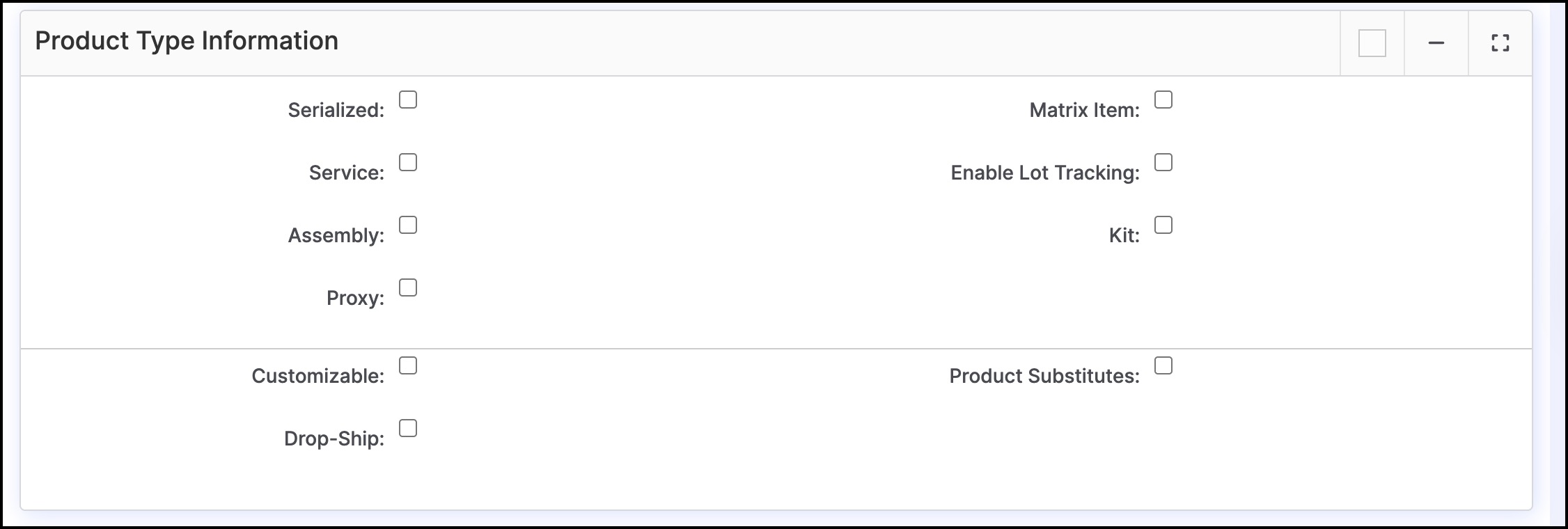
Entering Costs
Enter the unit cost of the product here.
- For Matrix Items, entering a unit cost here will apply the cost to all variations. The unit cost for each attribute can also be entered with the child SKU's during import or by manually editing in the Matrix Items tab after the product has been created.
- For Assembly and Kit Products, the unit cost is automatically calculated based on the unit cost of the bill of materials.
The Commission Rate does not automatically calculate commissions based on the information entered here, but it can be used in reporting and for calculating this info in Excel (or in the Business Intelligence Module if using Enterprise or higher editions of Agiliron).

By default the Usage Unit is set to each, it can be changed here.
- Send Stock Notifications
- Turn on/off notifications regarding inventory stock.
- Auto Create PO at Reorder Level
- When the Reorder Level is set for the product, select this checkbox for the system to automatically create a Purchase Order when the stock reaches the required reorder level.
- Once the Purchase Order has been generated it can be edited under Orders > Purchase Orders.
- If multiple items related to the same vendor meet their reorder levels simultaneously, a separate Purchase Order will be created for each product.
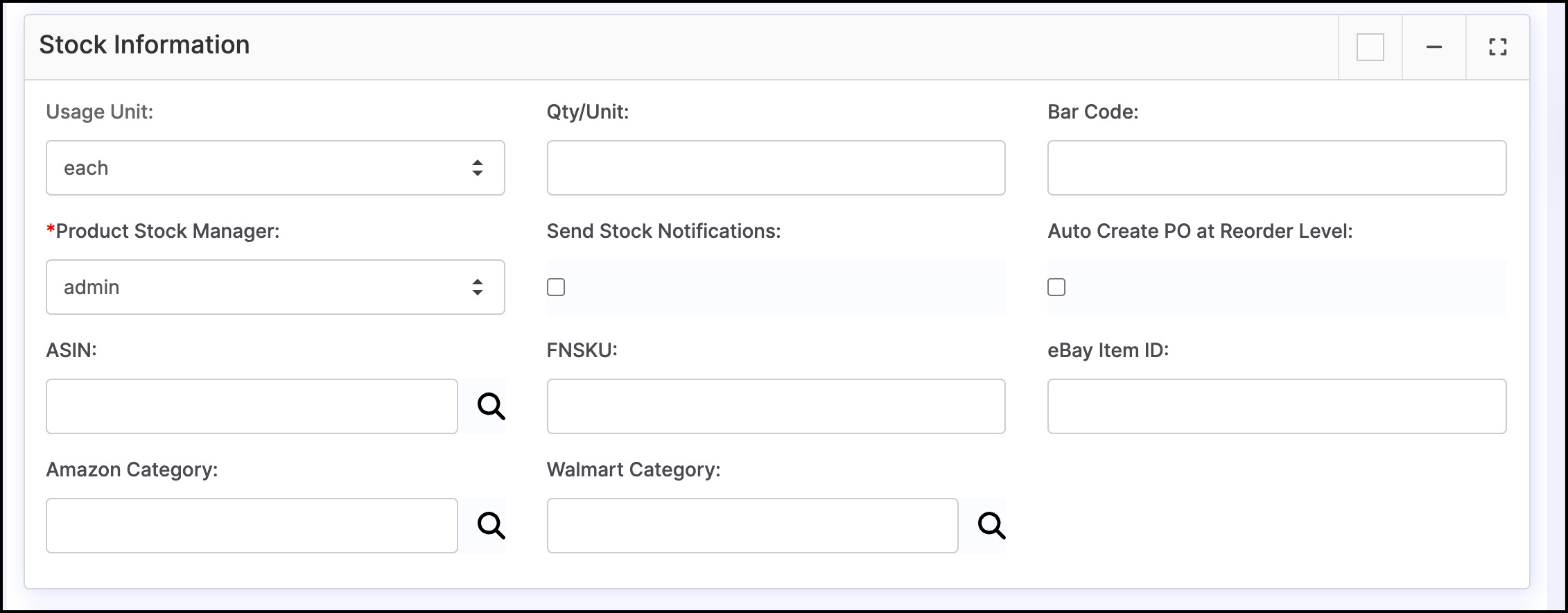
There is a group in the product form called "Accounting Information" which has also been highlighted in the screen above.
- The appropriate selection of the accounts and the tax status for this product is critical to ensure that accounting and tax calculations are handled appropriately. The mapping to the "QuickBooks Item" is also made here so that any product in the Agiliron system can be mapped to the right item in your QuickBooks configuration.

Shipping Information
- If using calculated shipping on the web store, enter product dimensions here.

There is also a group on the product form called "Product Image Information" for specifying one or more product image(s) to be used on e-commerce channels.
Click on the "Select files..." button to select a product image from your computer disk, to add more images click the "Select files..." button again and select another image. The name of the selected images is displayed below the selection field with an X next to them. Click the X to delete the respective image.

Description Information
- Enter the product long description here, the text editor allows for detailed formatting.
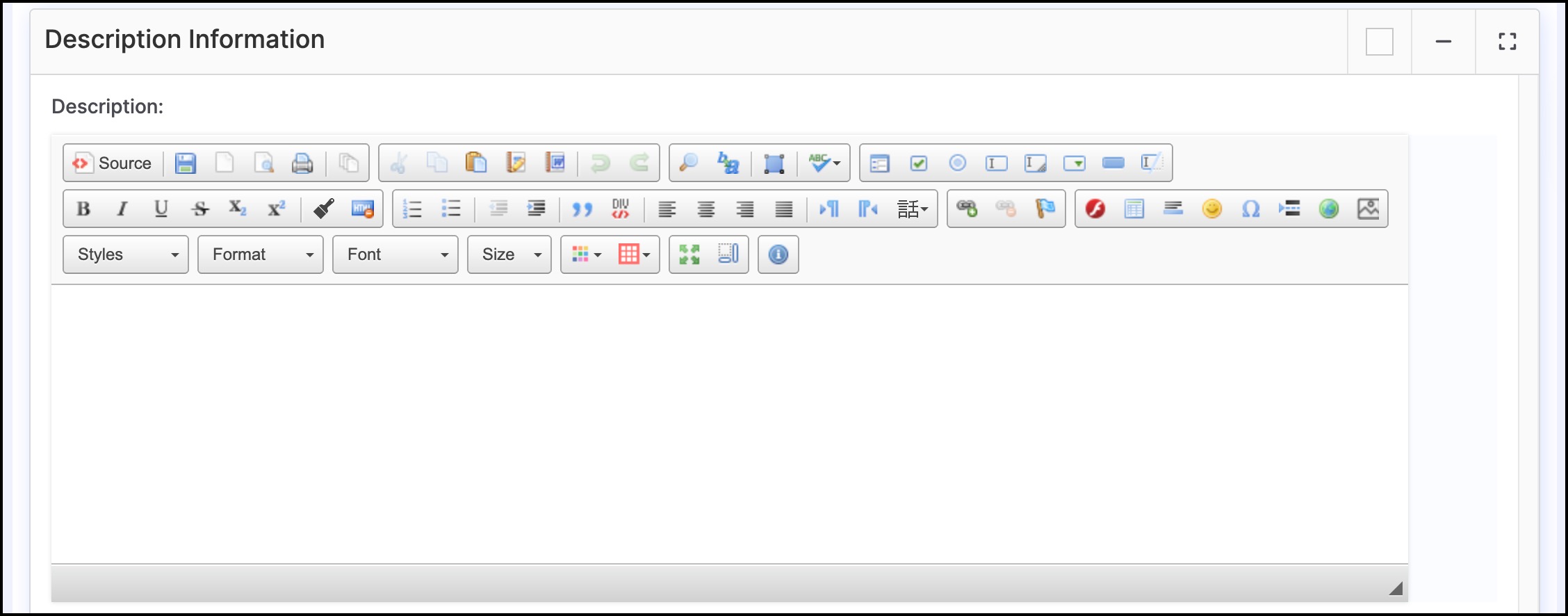
SEO Information
- SEO titles, descriptions, and tags can be entered here.

Custom Information
- Product Custom Fields that have been created under Settings > Custom FieldSettings > Product Custom Fields will appear here.

Once the relevant data has been entered, click the "Save" button to create the product in the system.
Pricing Information
- Once the product has been saved, the product selling price(s) can be entered using the "Edit Pricebooks" button. Select this button to begin.
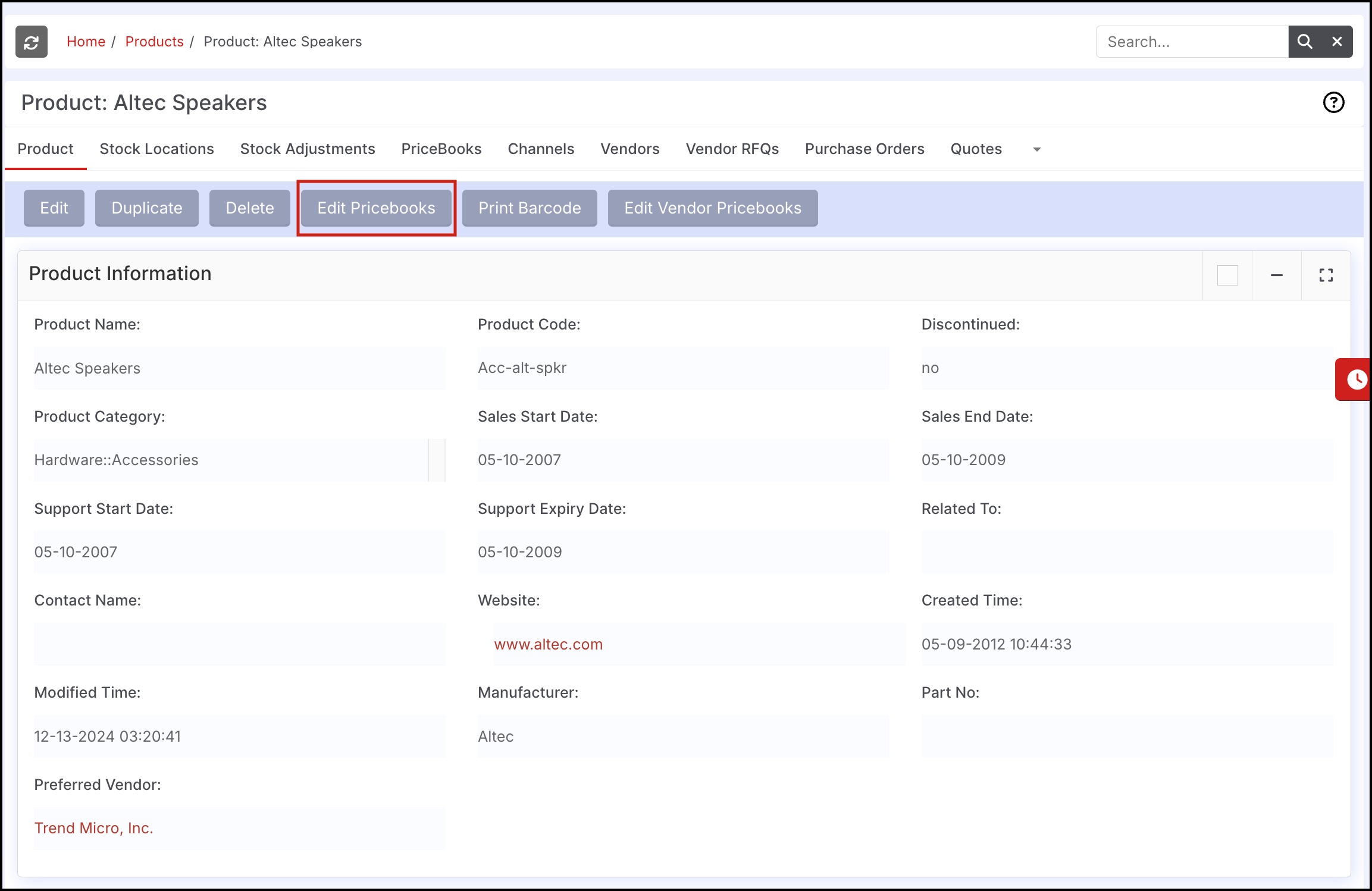
- A pop-up will appear with a list of pricebooks that have been created under Products>PriceBooks.
- Enter the selling prices into one ore more pricebooks and click "Save" to finish.
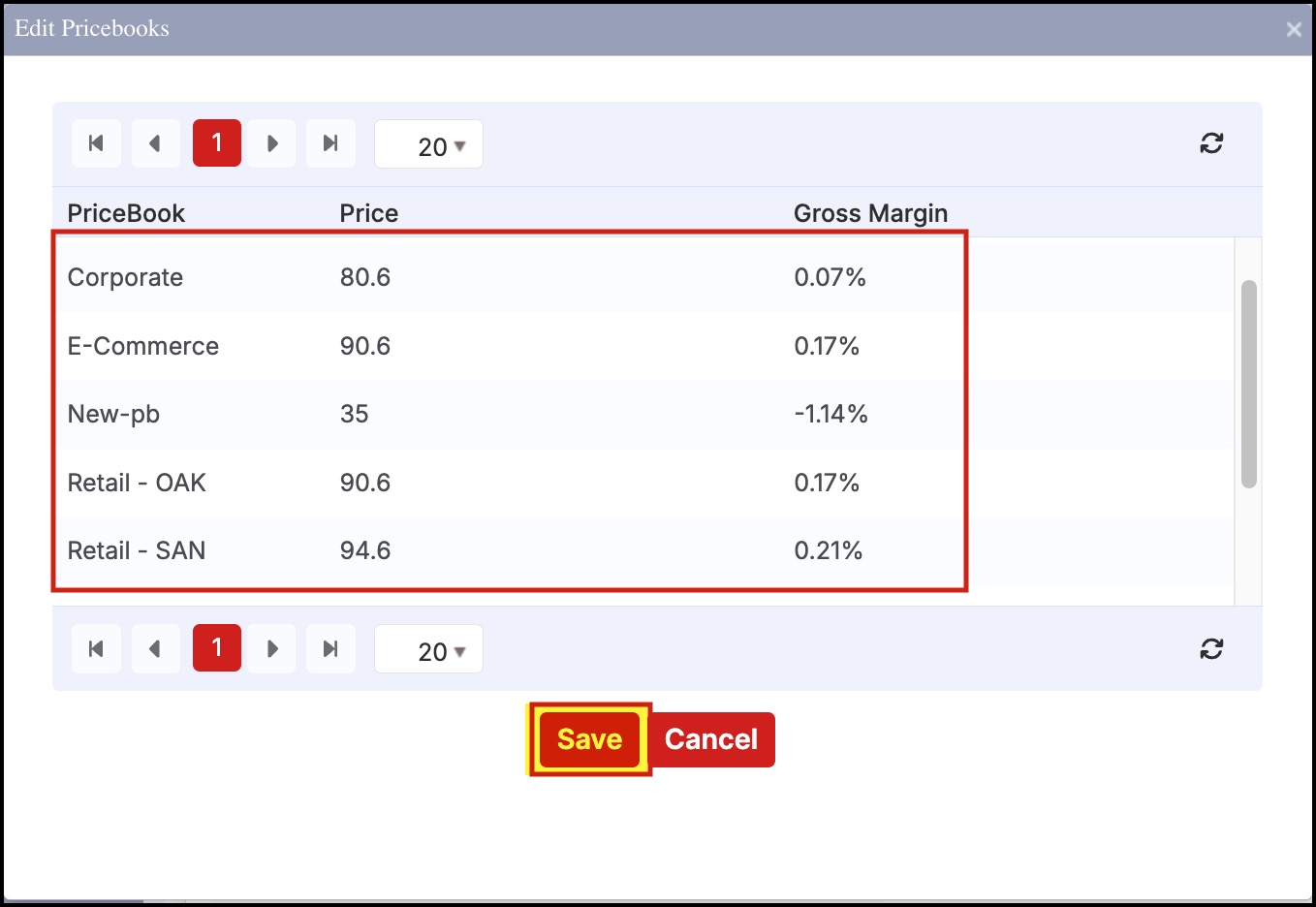
- Use the "Edit Vendor Pricebooks" button to enter the Vendor purchase pricing for the product. Select the button to begin.
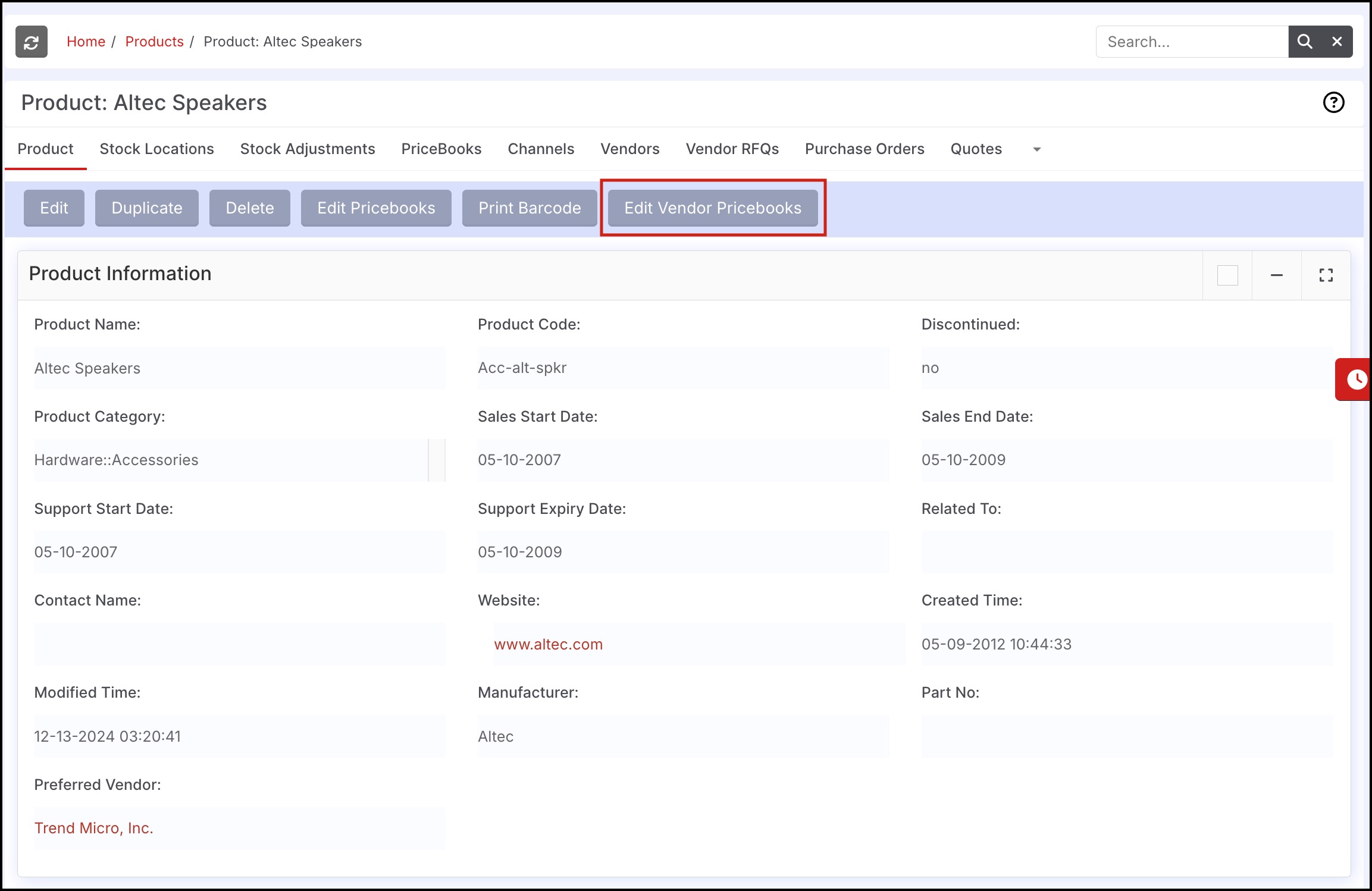
- A pop-up will appear with a list of vendor pricebooks that have been created under Products>PriceBooks.
- Enter the vendor purchase pricing into one or more pricebooks and click "Save" to finish.
- Note that at least one vendor must be selected as a preferred vendor.
- Additional vendors can be selected here as needed, but only one can be marked as the preferred vendor.
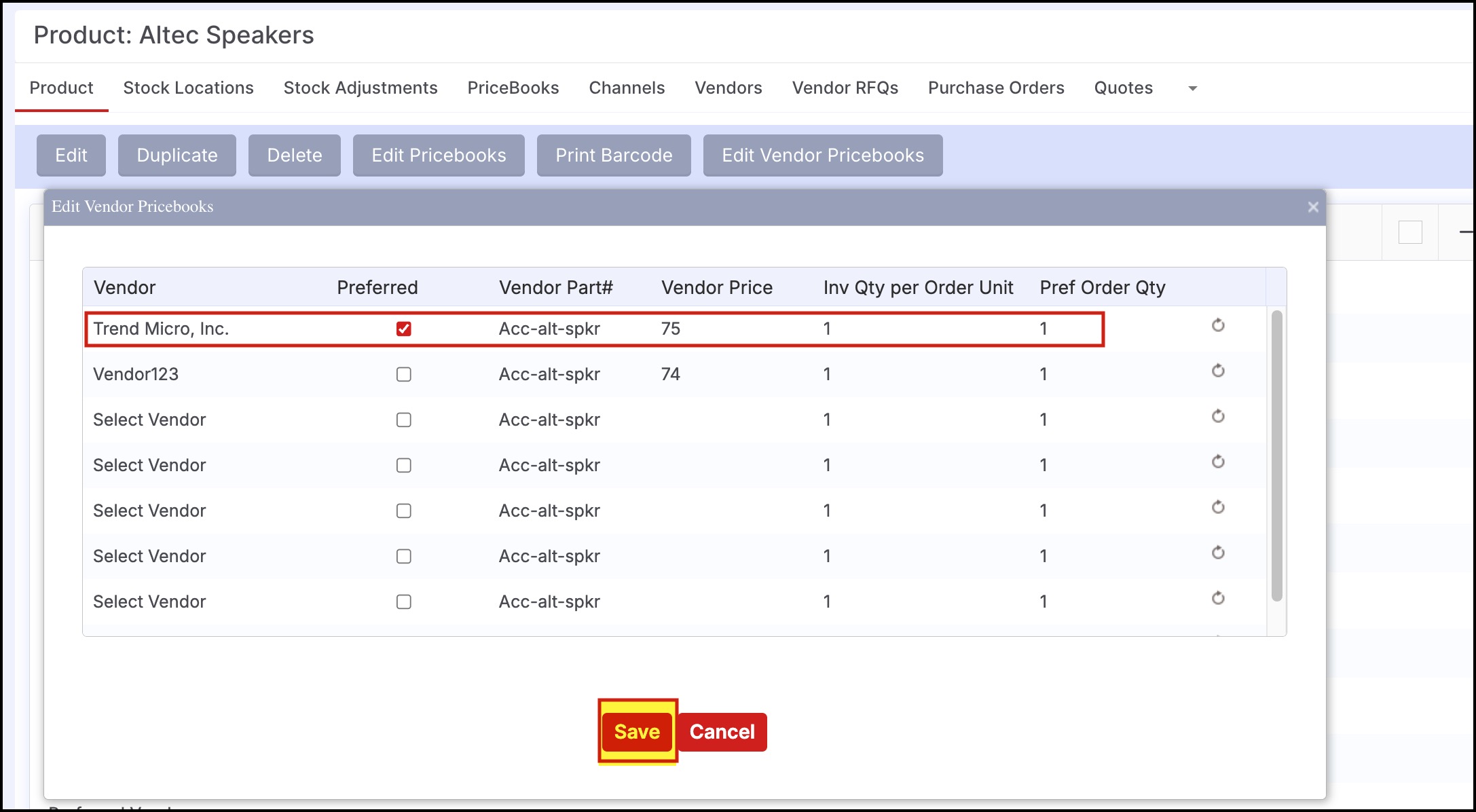
Additional Product Information
The total inventory of the product is managed by stock location(s) (one or more).
- Click the "Set" button next to the specific location to edit the inventory quantity, its "Reorder level" for that location or the "Preferred Stock Level" (note that the feature for preferred stock level must be turned "on", contact[email protected] to enable).
- To "Edit" and add a bin location, "Adjust" inventory or "Transfer" inventory click on the respective icons for that location.
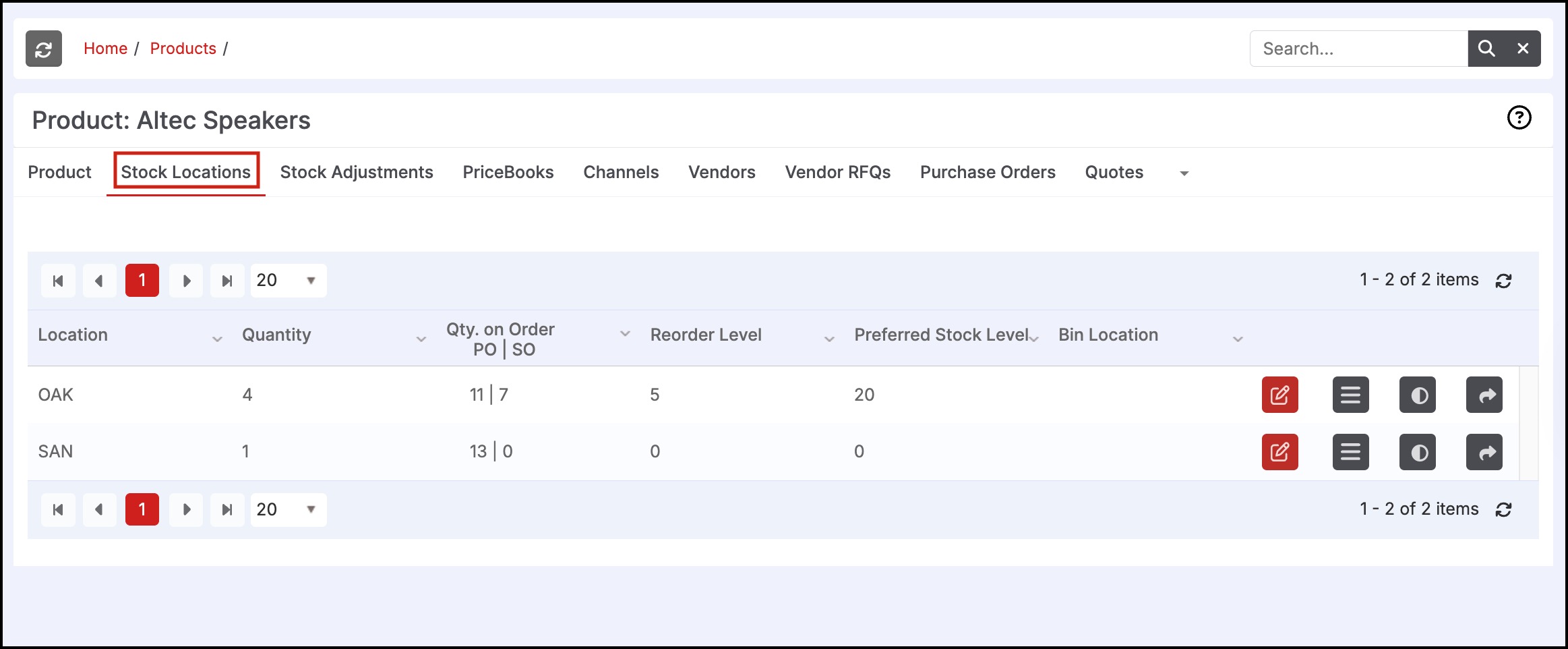
The following screen is presented to the user in the case where the business chooses to take the "Serialized" products approach.
- In the case of the serialized product, a new group called "Stock Items" is displayed. This group will not be available for non-serialized products. This group displays the inventory by serial number.
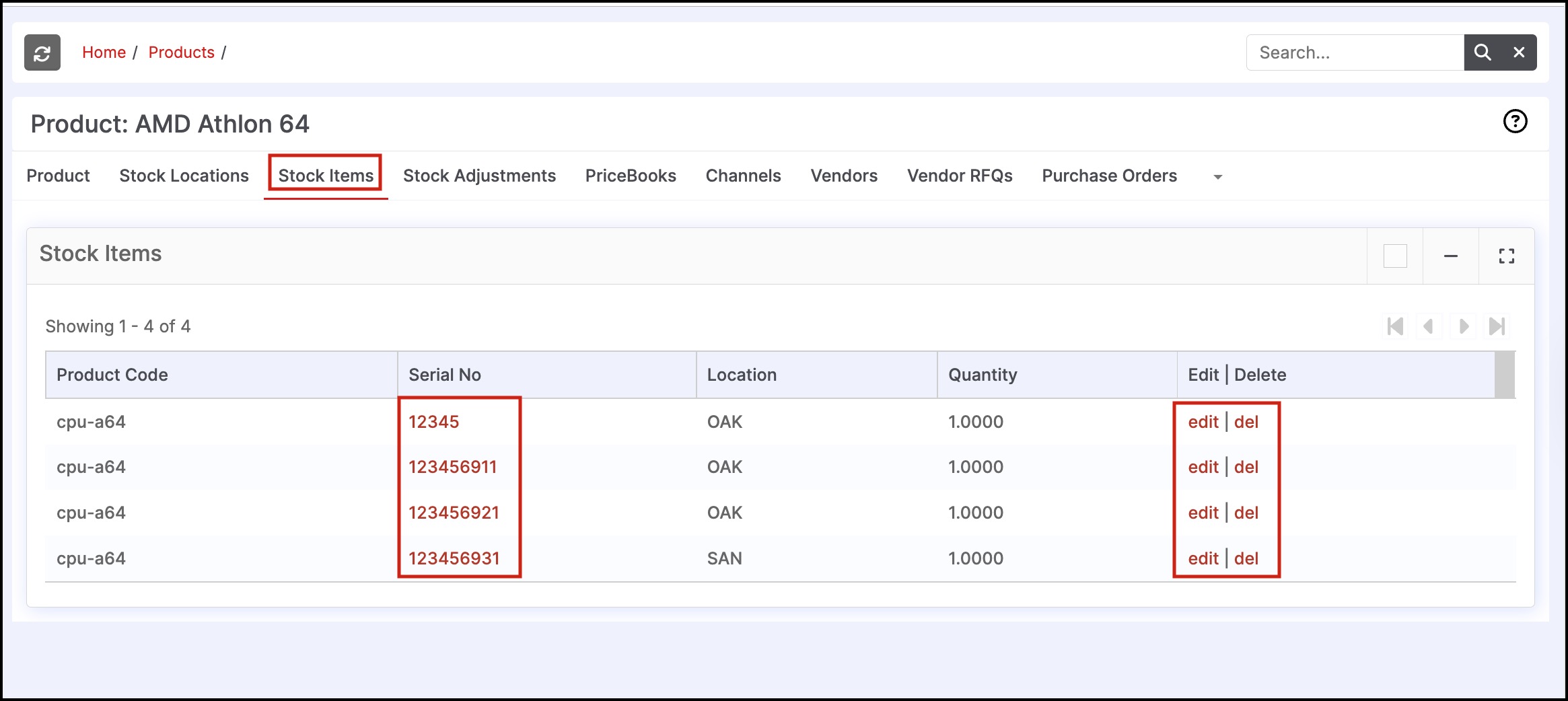
- In the case of matrix item products, a new group called "Matrix Item" is displayed as shown below.
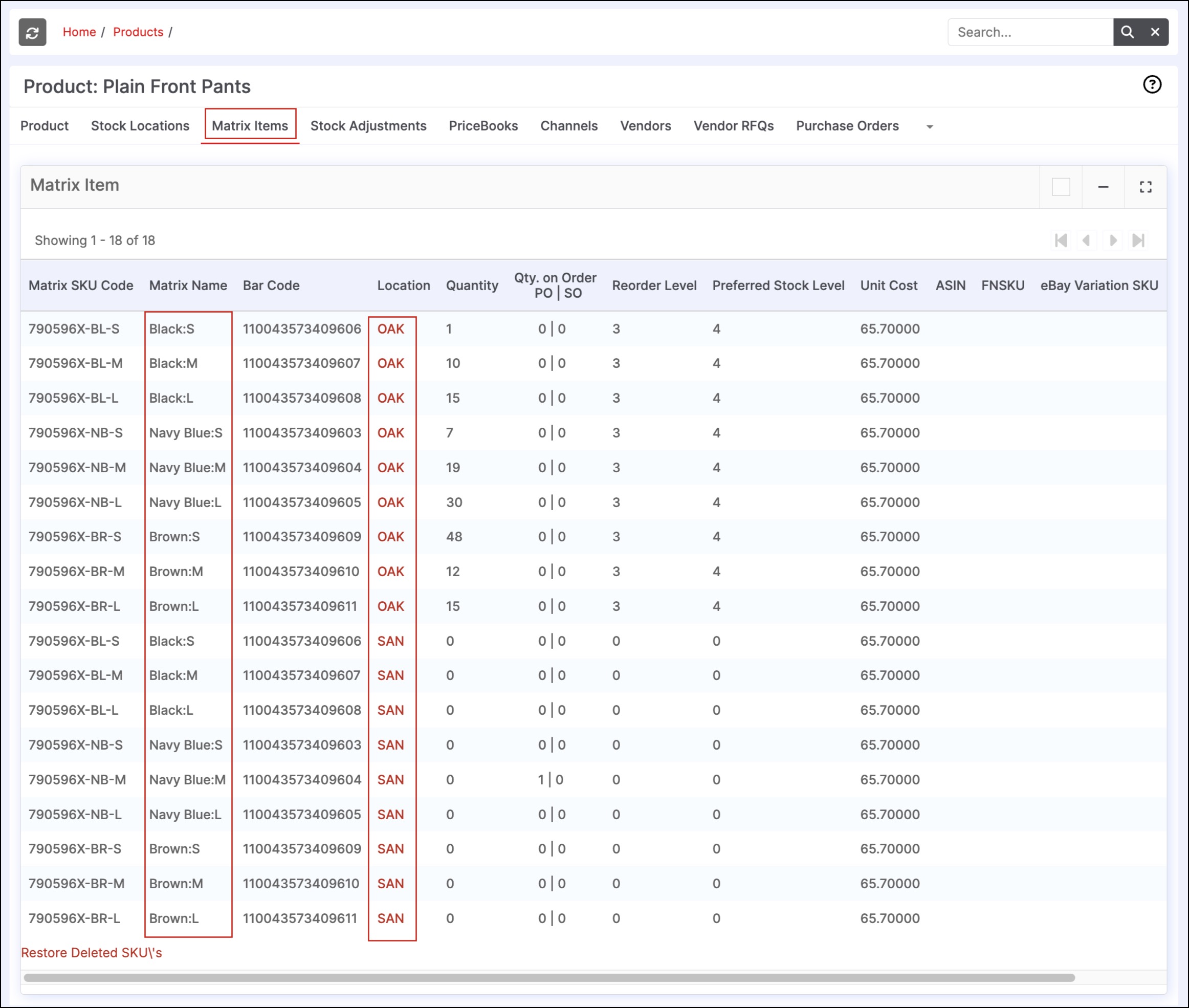
To add a new matrix item combination to the inventory, click the "Add" link, this will bring up the selection form that allows selection of the combination of matrix item attribute that should be added to the inventory.
The other product types behave in a similar and consistent way. Note: The inventory quantity of a product is specified differently depending on whether it is designated as a serialized product or a matrix item product etc.
- For a product without serialization or matrix items - the quantity of the product is associated with the stock locations specified (number of items at a stock location).
- For a product with serialization - the quantity of the product is specified by the number of serialized items (each item with serial number) added under the product (each item is also associated with a stock location).
- For a product with matrix items - the quantity of the product is specified for each SKU (combination of matrix item attributes - e.g. XL-Blue) by stock location.
- For a lot tracked product - the quantity of the product is specified by the lot items (each lot has a lot number and associated inventory quantity) added under the product. Each lot is also associated with a stock location.
- For a kit product - the quantity is the number of kits created from the components. When new kits are created, inventory is automatically drawn from the existing inventory of the components in the system. If any of the components of the kit are lot tracked, then the kit is also automatically lot tracked with expiration set to the earliest expiration of its components.
- For service products, there is no inventory management.
Product Timeline
Once a product has been saved and transactions have occurred, the Product Timeline icon will display details about the product activity.
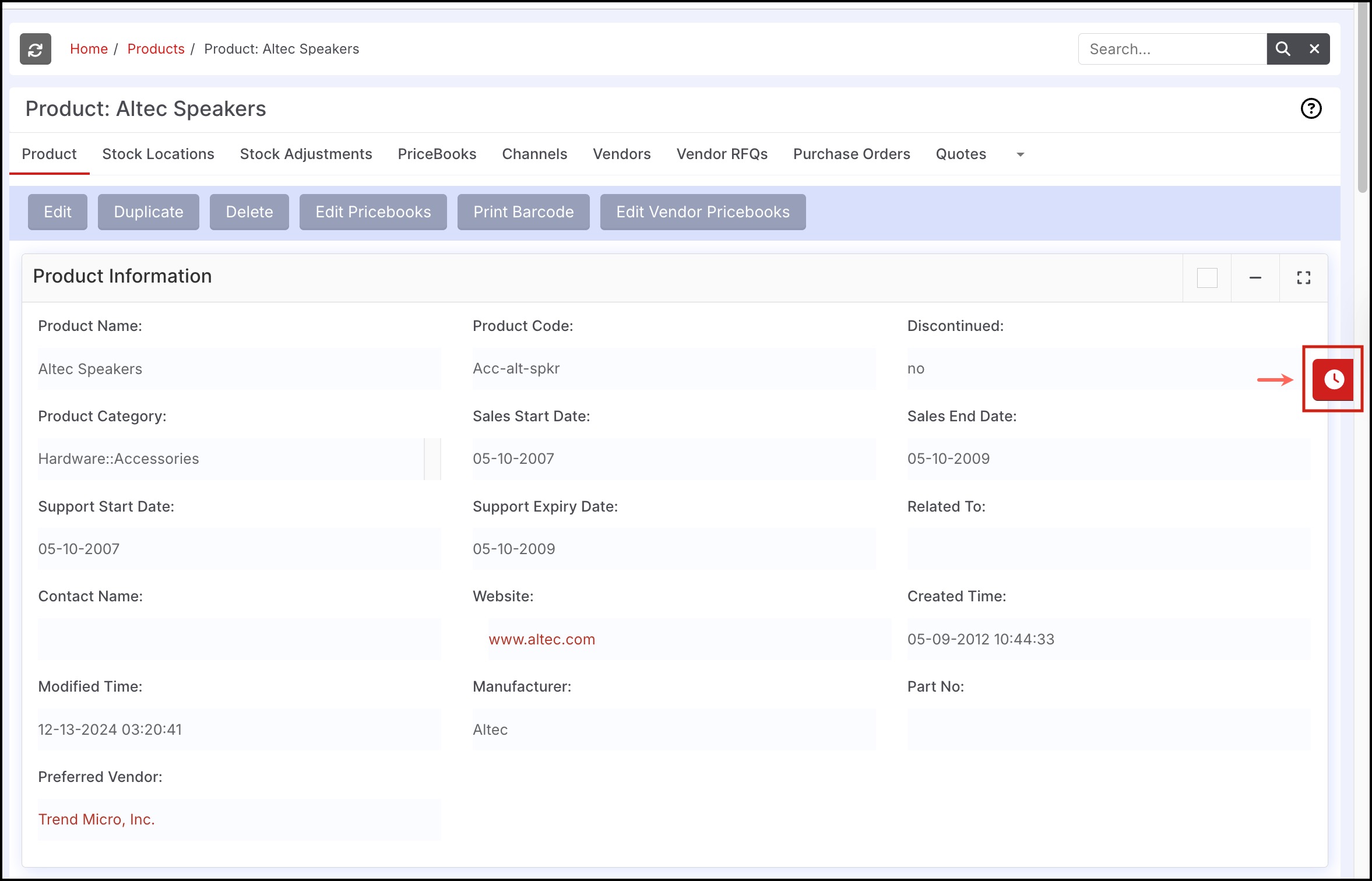
Selecting the icon will expand to display the product activity and display all events related to the product - this includes Inventory changes, Imports, Edits, Quotes, Sales Orders, Purchase Orders, Returns, Shipping, Receiving, etc.
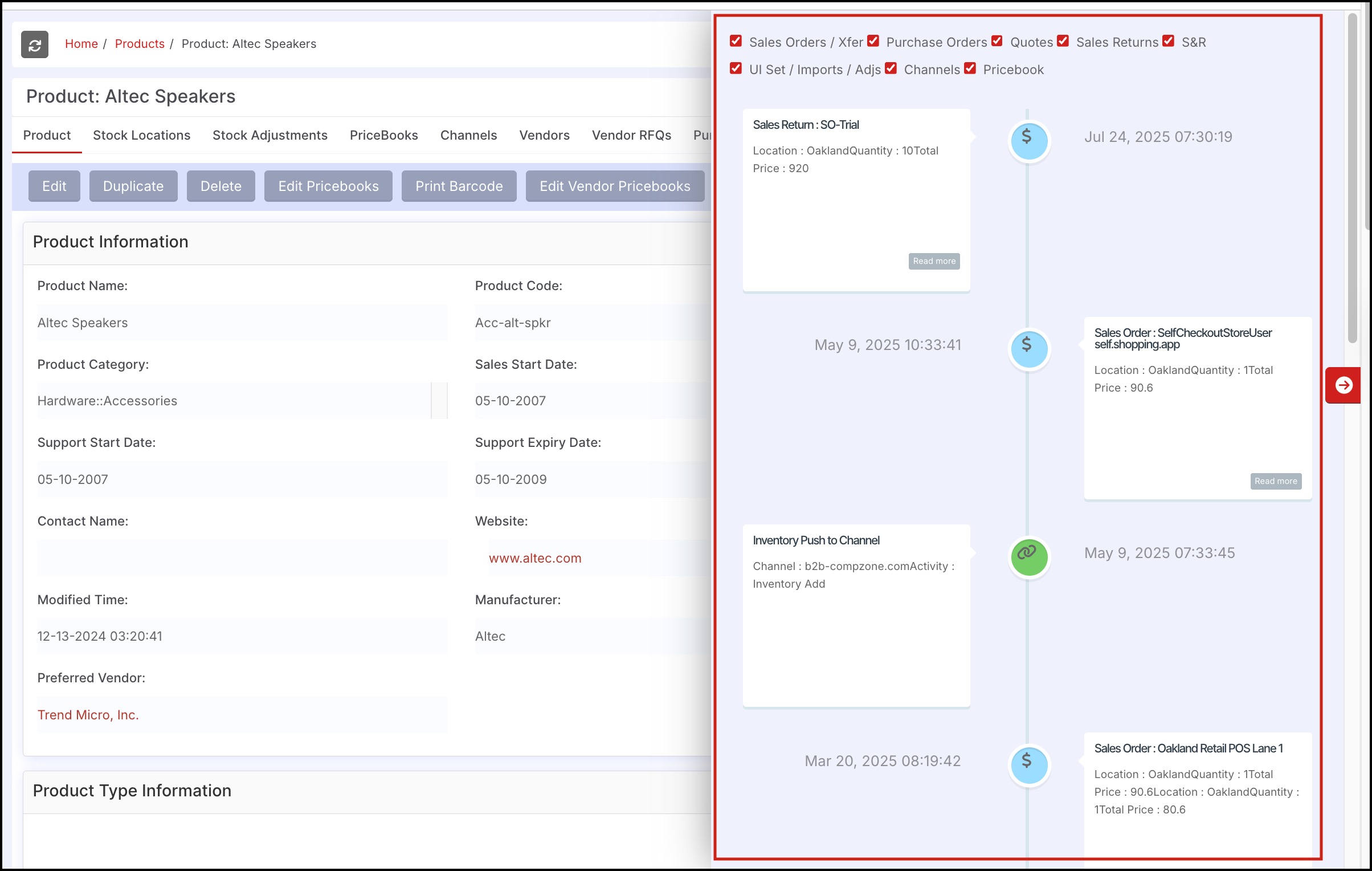
Updated 5 months ago
